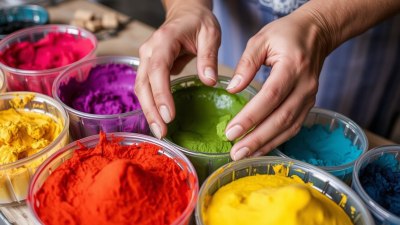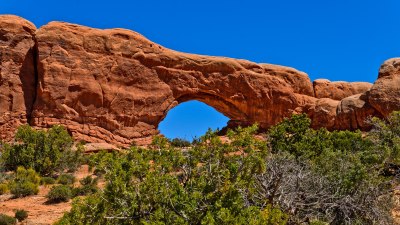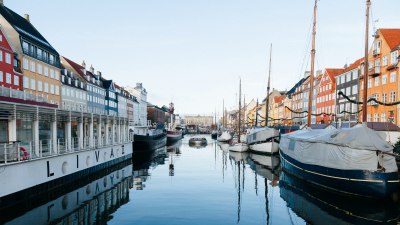Learning to Make Local Dyes and Pigments in Workshops
Discover the art of creating local dyes and pigments in workshops. Sustainable, eco-friendly, and creative!

Image created with Flux Schnell
In an increasingly digital world, the rediscovery of traditional crafts is gaining momentum. One such craft is the art of creating local dyes and pigments. Not only does this skill connect us to our environment, but it also opens up a world of creativity. Workshops dedicated to teaching these techniques are springing up across the globe. In this article, we explore the significance of local dyes, the processes involved in making them, and the benefits of participating in these workshops.
The Significance of Local Dyes
Local dyes, often derived from plants, minerals, and even insects, have been used for centuries to add color to textiles, crafts, and artworks worldwide. These dyes are not just beautiful; they are also rooted in cultural heritage and local ecosystems. By using local materials, artisans respect and maintain their environment, making these practices inherently sustainable.
The Process of Making Local Dyes
The process of making local dyes can vary depending on the source material. Here’s a general step-by-step guide to how many workshops approach dye creation:
Step 1: Material Sourcing
Participants are often encouraged to collect local plants, flowers, and other materials. Some common sources include:
- Plants: Yellow onion skins produce a beautiful golden hue.
- Berries: Blackberries and blueberries can create rich purples and blues.
- Roots: Turmeric roots yield bright yellow tones.
- Insects: Cochineal insects produce vibrant reds.
Step 2: Preparation of the Dye
Once collected, the materials must be prepared. This often involves chopping, crushing, or soaking the ingredients to release their natural pigments. Techniques can vary, with some dyes requiring long simmering times while others may only need a quick boil.
Step 3: Mordanting
Mordants are substances used to fix dyes to the fabric. Common mordants include alum, iron, and tannin. The choice of mordant can influence the final color, making it an essential step in the dyeing process. In a workshop setting, participants learn how to safely handle these chemicals.
Step 4: Dyeing the Fabric
The prepared dye can now be used on fabric. This involves immersing the pre-mordanted material in the dye bath and allowing it to soak until the desired color is achieved. Some workshops teach additional techniques such as tie-dyeing or shibori for unique patterns.
Step 5: Rinsing and Drying
After dyeing, the fabric is rinsed and dried. Participants often marvel at the magical transformation that occurs, turning plain fabric into vibrant, colorful textiles. Workshops typically encourage sharing results, fostering a sense of community and creativity.
The Benefits of Participating in Workshops
Participating in local dye and pigment workshops offers numerous advantages:
- Connection to Nature: Participants get firsthand experience in sourcing materials from their surroundings, reinforcing the value of local ecosystems.
- Cultural Preservation: These workshops often highlight traditional practices passed down through generations, keeping local culture alive.
- Hands-On Experience: The tactile nature of dyeing allows individuals to engage their senses and learn through doing.
- Community and Networking: Workshops provide a space for like-minded individuals to connect, share ideas, and create together.
- Sustainable Practices: Learning to create dyes from natural materials aligns with eco-friendly practices and promotes environmental stewardship.
Exploring Advanced Techniques
For those with a foundational understanding, many workshops also delve into advanced techniques. This can include creating complex color palettes by layering different dye processes or experimenting with natural modifiers to change colors post-dyeing, such as using vinegar for acidic or baking soda for alkaline shifts.
Creating Pigments for Artistic Uses
In addition to fabric dyeing, workshops often explore creating pigments for various artistic applications. These natural pigments can be used in painting, ceramics, and even cosmetics. Some workshop topics include:
- Mineral Pigments: Sourcing earth pigments like ochre, umber, or clay to create rich, textured colors.
- Plant-based Pigments: Using fruits and vegetables to create watercolors or pastels.
- Binders and Mediums: Learning about different binders such as gum arabic or casein that help in formulating paints.
Tips for Starting Your Dye Journey
If you're inspired to start your dye journey, consider these tips:
- Start Small: Begin with a few local plants and basic techniques.
- Document Your Process: Keep a dye journal to record color recipes and techniques.
- Experiment: Don’t be afraid to try unusual materials or combinations.
- Join Local Workshops: Whether in-person or online, these can enhance your knowledge and skills.
Learning to make local dyes and pigments offers a unique opportunity to reconnect with nature, culture, and creativity. By participating in workshops, you can not only acquire valuable skills but also join a community of passionate individuals committed to sustainable practices. Whether you aim to create beautiful textiles or explore artistic expressions, the journey into the world of natural dyes is a fulfilling adventure.











